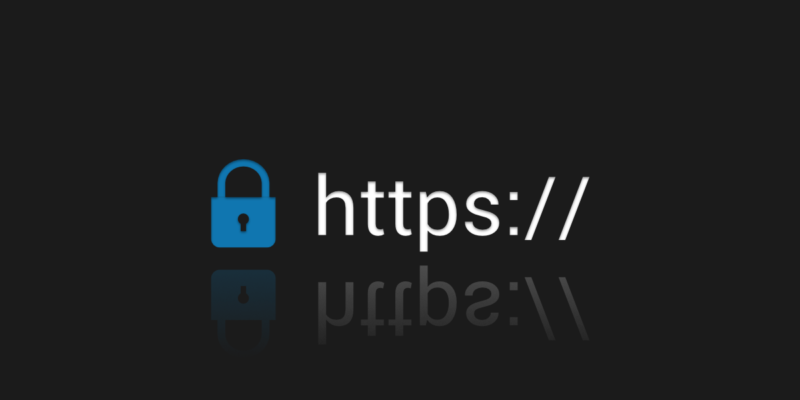Best Practices
The Importance of SSL Inspection for Monitoring Employee Web Use

In the digital era, as businesses rapidly shift towards cloud-based solutions and web applications, maintaining the security and integrity of data has become paramount. One such technique that stands out in ensuring a secure web environment is Secure Socket Layer (SSL) encryption. While SSL helps in securing the data in transit between the client and the server, it poses challenges for organizations when it comes to monitoring and reporting on employee web use. Here’s where SSL inspection comes into play.
Understanding the Blind Spot: HTTPS without SSL Inspection
When an organization does not employ SSL inspection, the encrypted nature of HTTPS connections makes it difficult to have a clear view of the online activities of its employees. In such cases, only the domain name is visible, leaving a blind spot in understanding the exact nature of the content accessed. For example, an employee could access a permitted domain but navigate to inappropriate or risky pages within that domain, all while going unnoticed.
Peering into the Encrypted Tunnel: The Power of SSL Inspection
With SSL inspection enabled, organizations can decrypt and view the content of HTTPS connections. This offers numerous advantages:
- Content Type Visibility: By looking at the content type defined in the HTTPS header, organizations can determine the nature of content being transferred, be it images, JavaScript, CSS, or HTML. This helps in identifying if any unauthorized or harmful content types are being accessed.
- Identifying the Client with User Agent: The user agent in the HTTPS header provides information about the client making the connection. This includes details like the browser being used, the application, and the operating system. Knowing the user agent can be crucial in scenarios where certain browsers or applications have known vulnerabilities.
- Full URL Path Insight: Having visibility into the full URL path, as opposed to just the domain name, provides granular insight into the resources being accessed. This is particularly useful to pinpoint specific pages or resources that might be of concern.
In Conclusion
SSL inspection goes beyond just security; it’s about gaining clear visibility and understanding of employee web activity. This clarity ensures that the reports generated provide a true reflection of online behaviors, making them more accurate and informative. Without SSL inspection, organizations are merely scratching the surface, with a significant chunk of the web activity remaining concealed within the encrypted tunnel. In today’s cybersecurity landscape, where every bit of detail matters, SSL inspection emerges as a critical tool for ensuring both security and compliance.
SSL Inspection with Firewalls: Challenges and Effective Solutions

In our ever-evolving digital landscape, the focus on cybersecurity and data integrity has never been higher. SSL inspection, which is the process of decrypting and inspecting HTTPS traffic to monitor and regulate web content, is one way organizations aim to boost their cybersecurity posture. Many businesses trust their firewalls to undertake this task, but as technology advances, this approach presents several challenges:
1. Strain on Firewall Performance
The computational load required to perform SSL inspection can be demanding, and this additional burden may affect a firewall’s core functions. If a firewall is overtaxed with decrypting and inspecting traffic, its primary responsibility—shielding your network from threats—may suffer.
2. Limited SSL Inspection Capabilities
Not all firewalls are created equal. While some might possess robust SSL inspection capabilities, others might offer limited functionality or none at all. If you’re relying on a firewall without the necessary capabilities, your organization’s web traffic remains largely unseen.
3. Emerging Encryption Technologies
With encrypted DNS (DoH) and Encrypted Client Hello becoming increasingly popular, firewalls will find it increasingly challenging to intercept and examine traffic. These encryption advancements can limit the efficacy of even the most sophisticated firewalls, rendering them less effective for SSL inspection.
Given these challenges, many experts suggest looking beyond firewalls for SSL inspection.
Proxy-Based Solutions: The Way Forward
For environments seeking comprehensive SSL inspection without overloading their firewall, proxy-based solutions are often the ideal answer. These solutions are specifically crafted to execute SSL inspection tasks, offering detailed monitoring and reporting on employee web activity.
One of the trusted names in this arena is Wavecrest Computing. With nearly three decades in the field, Wavecrest has designed tools like Cyfin and CyBlock to address the specific challenges of SSL inspection.
CyBlock stands out as a premium choice for those in need. Not only does it offer the extensive monitoring and reporting features found in Cyfin, but it can also filter web access in real-time if desired. For businesses solely seeking SSL inspection, monitoring, and reporting, CyBlock fits the bill perfectly.
In Conclusion
Relying solely on a firewall for SSL inspection can lead to potential vulnerabilities and performance issues. As encrypted web traffic becomes the norm and emerging encryption technologies come into play, the challenges will only increase. Solutions like Cyfin and CyBlock from Wavecrest Computing can help businesses rise to these challenges, ensuring robust cybersecurity while providing detailed insights into web activity. If your current setup falls short or you’re aiming to optimize SSL inspection without taxing your firewall, Wavecrest offers the specialized solutions you need.
Enable secure access only to browser interface
To enable secure communication to the product interface, perform the following steps¹:
- Go to http://127.0.0.1:7999/setadv.php.
- Select Enabled.
- Log back into the interface.
- Go to Settings – ADV Secure Interface. Select Enable and click Submit.
¹ For version 6.8.3a/8.8.3a and earlier, please contact Technical Support.
-Karleen Carlson, IT Manager, Van Diest Supply Company

